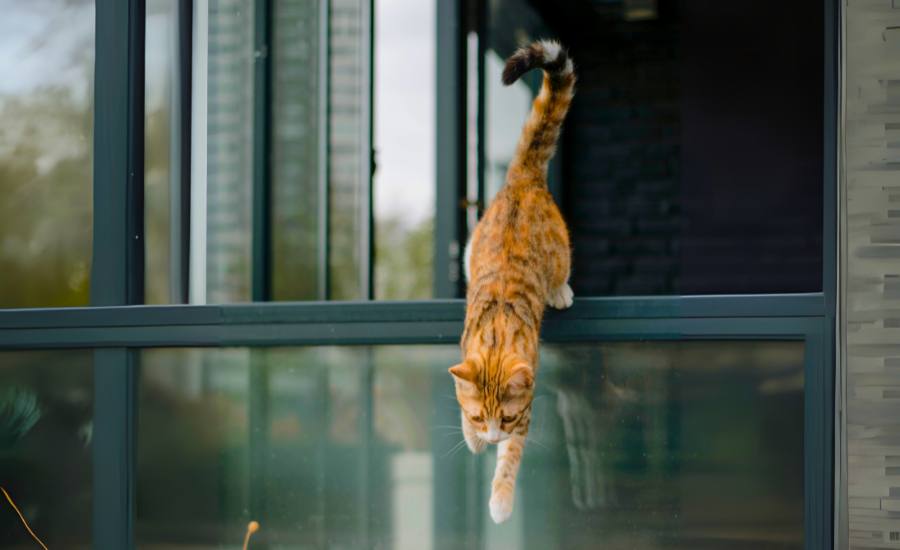How To Backpack Train Your Cat

Thanks to cat backpacks, the world of transporting your cat has been revolutionised, but it can be tricky to know where to start when it comes to backpack training your cat.
Luckily, we’ve put together our top tips to help you navigate the world of cat backpacks and help you and your cat get the best start at helping them learn how to love their backpack!
What is a cat backpack?

A cat backpack is a specially adapted carrier designed to be worn. Unlike traditional carriers which are held by hand, cat backpacks tend to be more lightweight, and the wearability relieves pressure on wrists and shoulders by spreading the weight evenly across the wearer's back. This also makes cat backpacks great for hands-free traveling.
Do cats like being in backpacks?

Yes, cats like being in backpacks if they are trained to use them properly. Cats quite often find comfort in small spaces as it promotes a sense of security, with the added benefit of keeping them warm. However, this doesn’t mean you can simply pick up your cat and put in a backpack and it’ll be happy! Cats are naturally cautious around new things and a gradual introduction to a new backpack will ensure your cat enjoys spending time in them.
Enroll now: 'How To Harness Train Your Cat'
How to train your cat to use (and love) a cat backpack

1. Choose a backpack that will best suit your cat’s needs
With so many cat backpacks to choose from, it can be tricky to know what style will best suit your cat. You want to think not only about your cat’s comfort but yours too, if you plan to use it for extended periods of time. Here are some of our top considerations:
Size – Will this backpack comfortably fit your cat inside? Your cat should have enough room to turn around, lie down and sit up.
Material – Depending on your climate this may be a very important consideration. You want to choose materials that are breathable so that in warmth or cold, your cat remains comfortable at all times. It’s helpful to also choose a material that is easily cleaned or has removeable sections that can be washed as and when required.
Openings – How will your cat get inside the bag? Cats typically gauge whether or not they can fit into a space by using their whiskers! The way they move sends direct information to the brain about their surroundings. If the opening of your cat backpack causes their whiskers to be pushed aside, your cat might not enjoy this. Openings should be big enough that your cat can enter/exit its carrier with ease and comfort.
Security – You want to make sure that any cat backpack you choose is secure and keeps your cat safe at all times.
Wearability – Much like a regular backpack, you want your cat backpack to sit comfortably on your back. This isn’t only for your comfort, but also your cat's. Imagine being worn on someone’s back and bouncing around – not fun! Your cat backpack should fit securely – adjustable shoulder straps will allow you to achieve the right height and position whilst a chest or waist strap can help keep it in place and help evenly distribute the weight.
2. Introducing your cat to their backpack - indoor training
We know that teaching your cat a new skill is super exciting, but these steps should not be attempted all at once, in the same day. These phases are designed to work over several days, weeks or even months for the best results. Each cat will learn at its own pace, so take your time and enjoy the process!
- Phase 1 - First Encounters
Start your introduction by leaving the cat backpack, with all its entry points open, in an area they can sniff and explore it at their leisure. It can be helpful to put their favourite blanket inside, so it already starts to smell of them. Your cat may go inside but don’t be tempted to zip it in straight away as this can frighten them. If your cat shows signs of taking a relaxed interest in the backpack - e.g. inspecting it, sniffing it or rubbing their scent on it, you can reward them. Depending on your cat’s preferences, a reward can be praise, playing with their favourite toy or a treat they love!
Once they are comfortable around the backpack, you can introduce other elements such as sounds. Does the zipper make a noise when you close it? Or the Velcro on the pockets? Whilst your cat explores the outside of the backpack, use the functions and help your cat get used to the noises the backpack makes.
Once they are fully comfortable with the sight, smell, feel and sounds of the backpack, you can move onto getting them inside and staying there. Quite often carriers and backpacks are only brought out when the cat is being taken somewhere. Initially, it can be a good idea to keep it out all of the time, so your cat comes to recognise it as a normal part of their surroundings.
- Phase 2 – Getting your cat inside the backpack
The best way to get your cat into their backpack is to let them do it on their own. You can start by luring your cat into the backpack with a treat or a toy. Once they are fully inside, you can reward them. Again, don’t be tempted to lure them inside and then zip them up! This can cause them to panic.
Once they are happy to go into the carrier on their own, you can slowly start to build up the time they are inside it before receiving their reward. At first your cat may only want to be in there a few seconds, but over time you can increase this length of time, and then start to work on closing the fastenings. Inch the fastenings shut, rewarding after each stage until you can get it all the way closed with a happy cat inside!
- Phase 3 – Using the backpack to transport your cat
Much like the previous steps, you want to break this phase down into manageable stages for your cat. Being closed inside the backpack is one thing but being moved around in it is a different sensation altogether. Holding the backpack securely, lift it of off the ground for a few seconds and then reward them. It’s important for them to have a positive association with being inside their backpack. Each step should see you get the backpack further off of the ground and eventually all the way onto your back.
Remember, if at any point your cat is showing signs of stress or discomfort, stop the session for that day, and then start again the next day, working one phase back until they are chilled and happy to proceed.
3. Taking your cat outdoors in their backpack
Once your cat is relaxed and content inside their backpack in an indoor space, you can move your training sessions outside. The outside world will present a whole new host of sensory stimulants so you can use an outdoor space, close to home to get started.
Much like the previous steps, you want to take a slow and steady approach! This may be stepping outside with your cat in its backpack for a few minutes and then returning indoors again. If your cat is happy to be outside, you can progress the training by walking a few metres with them, then rewarding and building this up over a further distance and longer period of time.
Can I use a cat backpack as a cat carrier?

Yes, you can use your cat backpack as a cat carrier. Cat backpacks provide security and comfort for your cat. However, there may be times when a cat carrier is the preferred option. For long transport journeys, a cat carrier can provide more comfort as they allow your cat to lie down with ample room, and they can also allow space for a food or water dish. They also tend to be heavier, therefore making them more secure. In the case that your cat makes a mess, cat carriers are easily wiped down and kept sanitary.
If you plan to travel by air with your cat, be sure to check the airline’s pet travel guidelines and policies. Depending on whether your cat can travel in the cabin with you, they may specify which style of carrier is preferred – some suggest a soft sided bag, which makes a backpack perfect, whilst others recommend solid sided carriers.
Related posts: 'Cat Exploring For Beginners' and 'How To Travel With A Cat'







